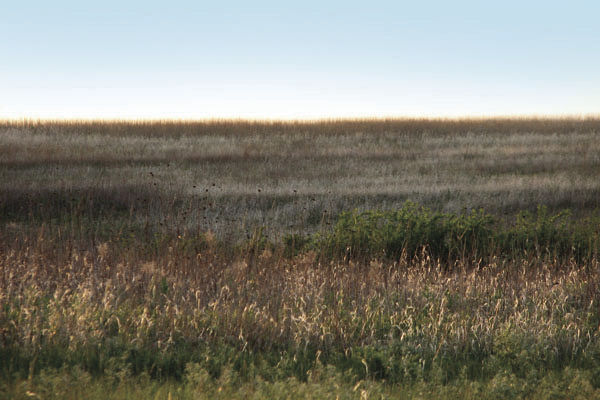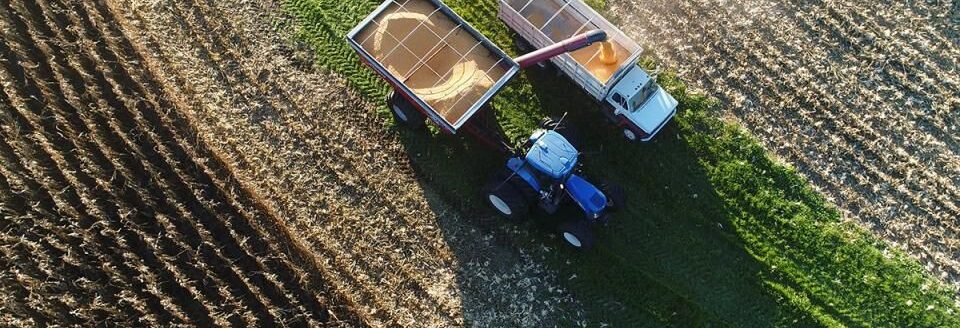A bipartisan group of members of the Senate Agriculture Committee March 15 has introduced legislation they say will refocus conservation spending on marginal cropland to benefit soil health, water quality and wildlife habitat, while protecting rural economies and ensuring greater farmland access for beginning young farmers and ranchers.
Republican Sens. Joni Ernst and Chuck Grassley of Iowa, along with Democrats Sherrod Brown of Ohio and Bob Casey of Pennsylvania have introduced the Give Our Resources the Opportunity to Work Act of 2018.
“As I travel across Iowa each year, I hear concerns from producers about how the Conservation Reserve Program has strayed from its congressional intent of targeting and removing environmentally sensitive land from agricultural production,” Ernst said in a statement.
“Rather, large parcels—sometimes whole farms—of productive farmland are being enrolled into CRP as a result of low commodity prices and high yearly rental payments. As a result, many beginning young farmers are having difficulty accessing farmable acres, which are hampering our efforts to engage the next generation.
“By revising and strengthening the current provisions of CRP, the Conservation Stewardship Program and Environmental Quality Incentives Program, the GROW Act will restore the intent of these programs while helping farmers and ranchers protect soil and water resources.”
Brown said in a statement, “This bipartisan bill is good for farmers, it’s good for taxpayers and it’s good for water quality and the environment.”
Grassley said, “Conservation of America’s natural resources is critical for successful farming operations, increased agricultural productivity and quality food and energy production. Healthier farmland equals a healthier America.
“The next farm bill must address preserving our soil and water and ensure that farm programs accomplish the goals we give them. I’m happy to join this effort by Sen. Ernst to make sure we spend our conservation dollars in the most efficient way to maximize the goals of programs like CRP while minimizing distortions in land markets.”
Casey said, “The next farm bill must focus our limited conservation dollars on the most environmentally sensitive lands, help farmers and ranchers achieve better soil health and water quality and improve access to land and USDA resources for young and beginning farmers.
“This bill does just that. I’m pleased to join with my colleagues from Iowa and Ohio on a bipartisan bill that will strengthen the farm economy while improving the health of the environment.”
Specifically, the GROW Act:
Makes most prime farmland and class I, II, III land ineligible for CRP enrollment.
Maintains CRP right-sized at 24 million acres and precludes whole farm enrollment into the program.
Levels the playing field for beginning farmers looking to access farmland by limiting general sign-up CRP rental rates.
Protects rural economies by reforming how much county cropland can be enrolled in CRP. Establishes a new CLEAR (Clean Lakes, Estuaries and Rivers) option within continuous CRP to better promote water quality.
Maintains annual enrollment for CSP and funding for EQIP.
Directs USDA to submit a report on land access, tenure and transition.
A few farm groups were in favor of the proposal. The National Grain and Feed Association commended the introduction of the legislation as a way to reform CRP to target enrollment of truly environmentally sensitive acres.
“We believe it is important that the next farm bill look to the future by providing opportunities for the next generation of American farmers to access land to build economically viable farm enterprises without having to compete against existing artificially high CRP rental rates and other CRP policies that currently create substantial barriers to entry,” said NGFA President Randy Gordon. “Reversing this trend is essential to the future lifeblood of rural communities.
“Focusing CRP on environmentally-sensitive acres also enhances the sustainability of U.S. agriculture and is essential to enabling the United States to remain competitive in international markets and to capture the increasing global demand for food and fiber.”
Among other things, the GROW Act would cap CRP rental rates for acres enrolled under general sign-ups to 80 percent of a county’s average cash rental rate. Currently, CRP rental rates often are considerably higher than local farmland cash rental rates, thereby pitting the U.S. government as a competitor against young and beginning farmers trying to enter production agriculture and remain in rural communities.
The NGFA also noted that based upon the most recent data available, more than 25 percent of the 24 million acres now enrolled in the CRP consists of productive farmland. The GROW Act also would retain the current CRP enrollment cap at 24 million acres.
“This bipartisan legislation is a positive step forward in retargeting the CRP away from enrolling large tracts of productive farmland and provides concepts that warrant serious consideration as development of the next farm bill proceeds,” NGFA said.
Alyssa Charney, senior policy specialist at the National Sustainable Agriculture Coalition said in a statement, “We are delighted to endorse the GROW Act. Developing a more sustainable agriculture system that will protect our natural resources, improve family farmers’ bottom lines and enhance our nation’s food security is the most important business at hand the next farm bill.
“Together CSP, EQIP and CRP account for 90 percent of conservation spending, so focusing on enhancing these programs’ effectiveness and accessibility should absolutely be a priority in the next farm bill.”
NSAC likes that the proposal makes major investments in soil health by offering additional support for cover crop adoption and supplemental payments for Resource Conserving Crop Rotations and Management Intensive Rotation Grazing within CSP, ensuring that farmers’ conservation investments are appropriately rewarded and incentivized by farm bill conservation programs.
“Nothing in agriculture is more fundamental than healthy, productive soils,” said Charney. “Going from ‘dirt’ to healthy soil, however, is far from easy—developing a conservation plan and implementing appropriate, targeted conservation activities can be both challenging and costly for farmers. The GROW Act will provide the assistance and incentives that farmers need to protect the natural resources on and around their operations, support the productivity of working lands, and protect the most sensitive acres.
“Our members also are very excited about the prospects for the Grasslands and CLEAR Initiatives. Emphasizing CRP’s support for partial field enrollments, such as conservation buffers, will help the program to better complement working farms and ranches while protecting natural resources.”
Finally, the GROW Act recognizes that access to land is a persistent and increasingly difficult problem in agriculture, especially for beginning and socially disadvantaged farmers. To address this, the bill increases conservation assistance for beginning farmers seeking to access land and will include updates to CRP to help keep fertile land in production. Additionally, it increases beginning and socially disadvantaged farmer participation in working lands programs by increasing the set-aside from 5 to 15 percent in both EQIP and CSP. It also ensures that the advance payment option within EQIP automatically applies for all within this group of participants.
“Beginning farmers are determined to be stewards of the land,” said Charney, “but they can only do that if they’re given the chance to break into the industry and begin farming. Federal conservation programs can help bring in the next generation by reducing barriers to entry and by funneling more working lands conservation dollars their way.”
Larry Dreiling can be reached at 785-628-1117 or [email protected].




